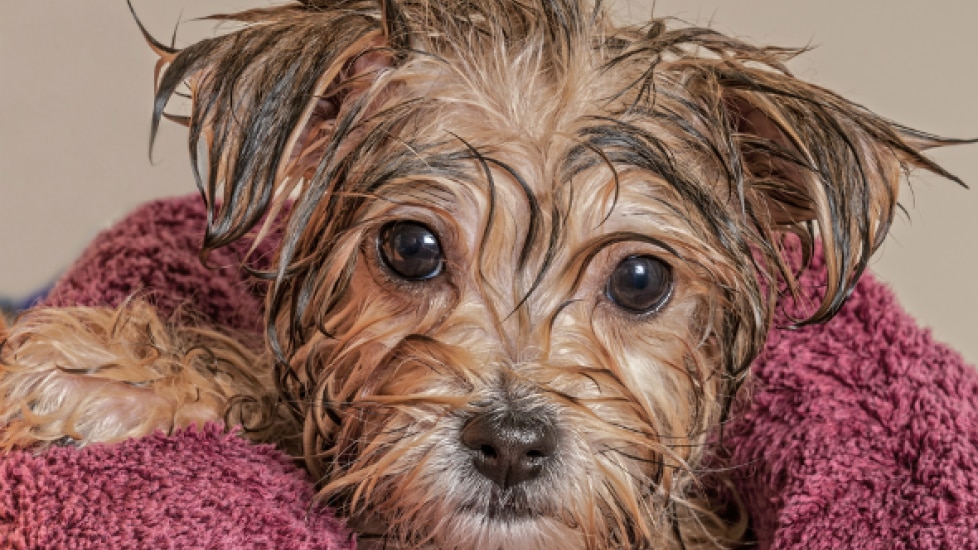5 Tips for How to Get Rid of Cat Dandruff and Dog Dandruff
Can Dogs and Cats Get Dandruff?
Yes, dogs and cats can both get dandruff, and while it’s not the most aesthetically pleasing thing in the world, it is a sign that your pet’s skin is dry. Cat dandruff and dog dandruff are not necessarily medical issues.
How to Get Rid of Dog Dandruff and Cat Dandruff
So what can you do to get rid of it? Here are five ways to deal with dog dandruff or cat dandruff.
1. Get Your Veterinarian’s Opinion
Sometimes flaky skin is a sign of a medical problem. For example, hormonal imbalances can cause skin issues. Your veterinarian may recommend diagnostic skin sample analyses and bloodwork.
2. Look Into Changing Their Diet
Pets need a certain amount of fat in their diet (the good kind of fat—no bacon!) to keep their fur shiny and their skin nice and supple. Either switch their diet to a high-quality pet food or supplement their diet with oil-based dog supplements or cat supplements.
Oils containing high levels of omega-3 fatty acids, such as fish oil, are excellent for skin health. Coconut oil may also be helpful for dogs and cats. It is important that these oils be introduced slowly so as not to cause stomach upset or diarrhea.
Consult your veterinarian to discuss each of these options.
3. Bathe Your Pet Regularly
We all need a good bath every now and again (or at least a shower), but when dealing with cat dandruff or dog dandruff, regular bathing can be most helpful in keeping dandruff at bay.
Moisturizing dog shampoos, cat shampoos and conditioners are available, as well as products designed specifically for dandruff issues. Just be sure not to over-bathe your pet, as this may cause a change in the pH of the skin, which can cause a medical problem. Unless instructed by your veterinarian, pets should not be bathed more than once every two weeks.
4. Try a Dandruff Shampoo
We’re not talking about the dandruff shampoo for people—that’s not for animals! There are, however, cat skin and coat care shampoos as well as dog skin care shampoos that have been specially formulated to help treat cat dandruff and dog dandruff.
So if the problem is really bad, then we recommend adding this to your pet’s regular bath time routine to help deal with the problem.
You can also talk to your veterinarian about prescription skin and coat care products that can help combat dog and cat dandruff.
5. Get the Right Brush, and Remember to Use It
Brushing your pet regularly not only makes your pet feel good and keeps her fur smooth and shiny, but it also helps massage the skin and distribute the coat’s natural oils.
But you’ll need the right type of dog brush. If it’s too soft for your pet’s fur, it’s not going to do any good, and if it’s too stiff, it will aggravate rather than help.
Finding the right dog brush will depend on the type of pet, type of coat and your pet’s tolerance for brushing. You can talk with your veterinarian or dog groomer for tips on what will work best for your pet.
Overweight animals (especially cats) may be unable to groom themselves, especially on their backs. The short-term solution is to brush your pet, but the real, long-term solution is weight loss.
Older pets also may not have the flexibility to groom hard-to-reach places, so it is important to help them.
Help us make PetMD better
Was this article helpful?
